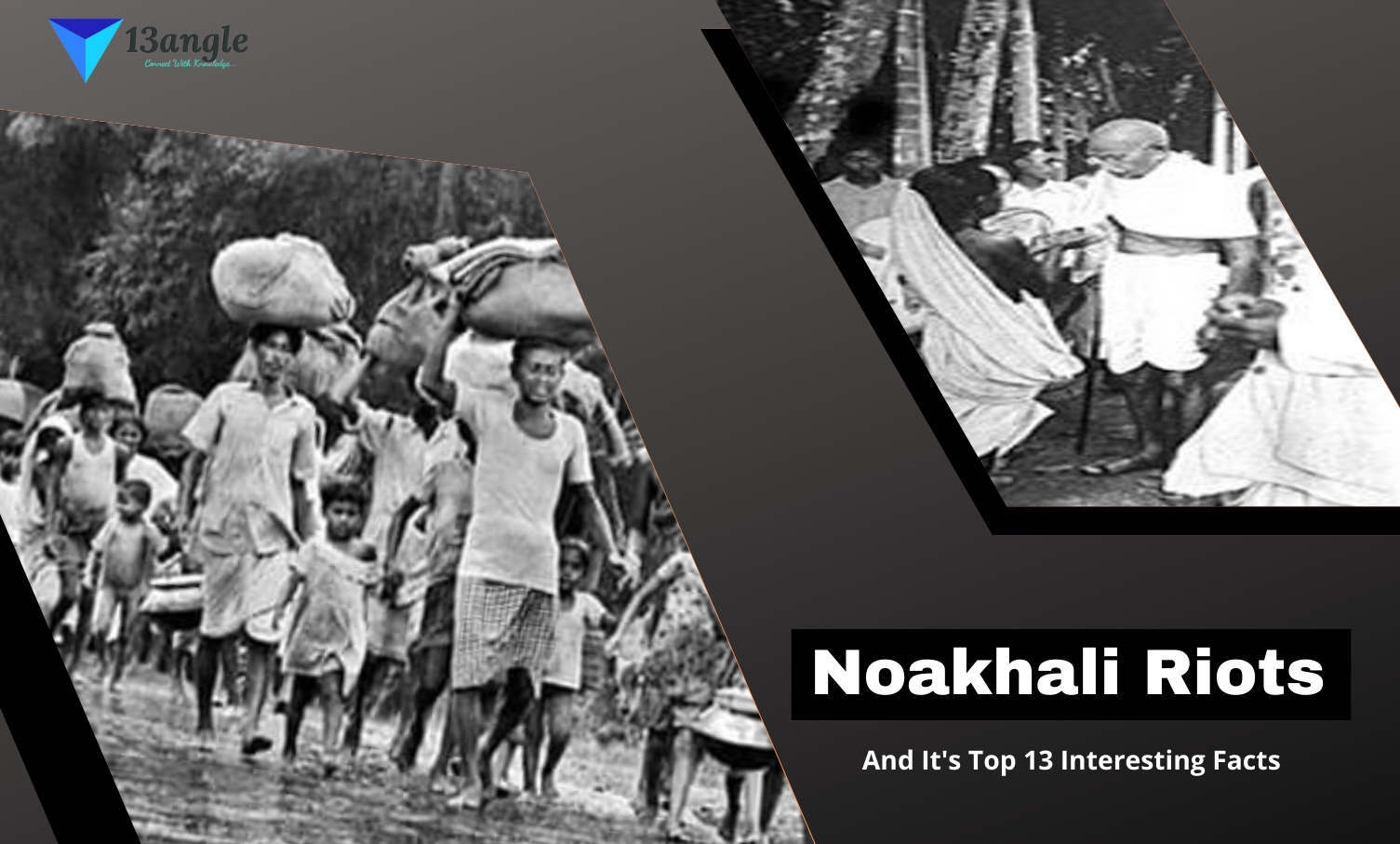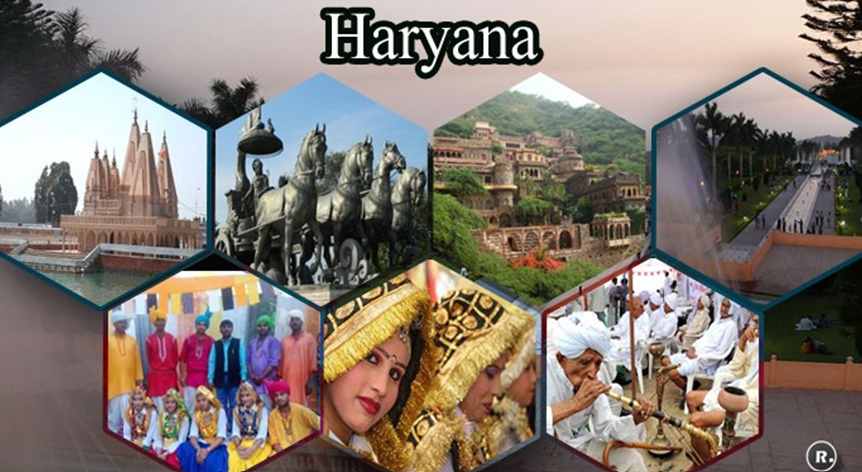
Introduction
- The state of Haryana was created on 1 November 1966. It was previously part of the state of Punjab in India. Its area covers 1.3 percent of the country. It is located in India’s northwestern region and surrounded by the state of Himachal Pradesh to the north, Uttarakhand to the northeast, Rajasthan to the south, Uttar Pradesh and Delhi to the east, and Punjab to the northwest. It shares its capital city Chandigarh with the state of Punjab. Haryana has 6 administrative divisions, 22 districts, 72 sub-divisions, 93 revenue tehsils, 50 sub-tehsils, 140 community development blocks, 154 cities and towns, 7,356 villages, and 6,222 villages’ Panchayats. It is ranked 21st in terms of area, with less than 1.4% (44,212 km2 or 17,070 sq mi) of India’s land area. The state capital is Chandigarh, shared with Punjab.
Haryana: Significance In Ancient Time
The earliest reference to Haryana is found in Chahamana Inscription describing Arnoraja as carrying arms into Haritanaka that is Haryana. The territorial designation Hariala mentioned in the Skanda Purana also stands for the same region.
Excavations of various archeological sites in Haryana, like Naurangabad and Mitathal in Bhiwani, Kunal in Fatehabad, Agroha, and Rakhigarhi in Hisar, Sites in Rukhi (Rohtak), and Banawali in Sirsa have evidence of pre-Harappan and Harappan culture.
Haryana is the region where, along the banks of the River Saraswati, the Vedic Civilization began and matured.
It was here that the Vedas were written, as the Aryans chanted their sacred Mantras. Replete with myths and legends, Haryana’s 5000-year-old history is steeped in glory.
B. Lal was the first to bring to the light archaeological evidence for the pre-Buddha history of the region with his discovery of the Painted Grey Ware at Kurukshetra, Pehowa, Amin, Panipat, etc. He has associated this pottery with the Aryans of the Mahabharata period.
These places are mentioned in the Mahabharata as Prithudaka (Pehowa), Tilprastha (Tilput), Panprastha (Panipat) and Sonprastha (Sonipat).
It was here that Lord Krishna preached Bhagavad-Gita at the start of the battle of Mahabharata and Ved Vyas wrote Mahabharata in Sanskrit.
Before the Mahabharat war, a battle of ten kings took place in the Kurukshetra region in the Saraswati valley. But it was the Mahabharat War, approximately in 900 BC, which gave the region worldwide fame.
Haryana has been the scene of many wars because of it being “The Gateway of North India”. As years rolled by, successive streams of Huns, Turks, and the Afghans invaded India and decisive battles were fought on this land.
After the downfall of the Gupta empire in the middle of the 6th century AD north India was again split into several kingdoms. The Huns established their supremacy over Punjab. It was after this period that one of the greatest Kings of ancient India, Harshvardhana began his rule. He became the King of Thanesar (Kurukshetra) in 606 AD and later went on to rule most of north India.
History
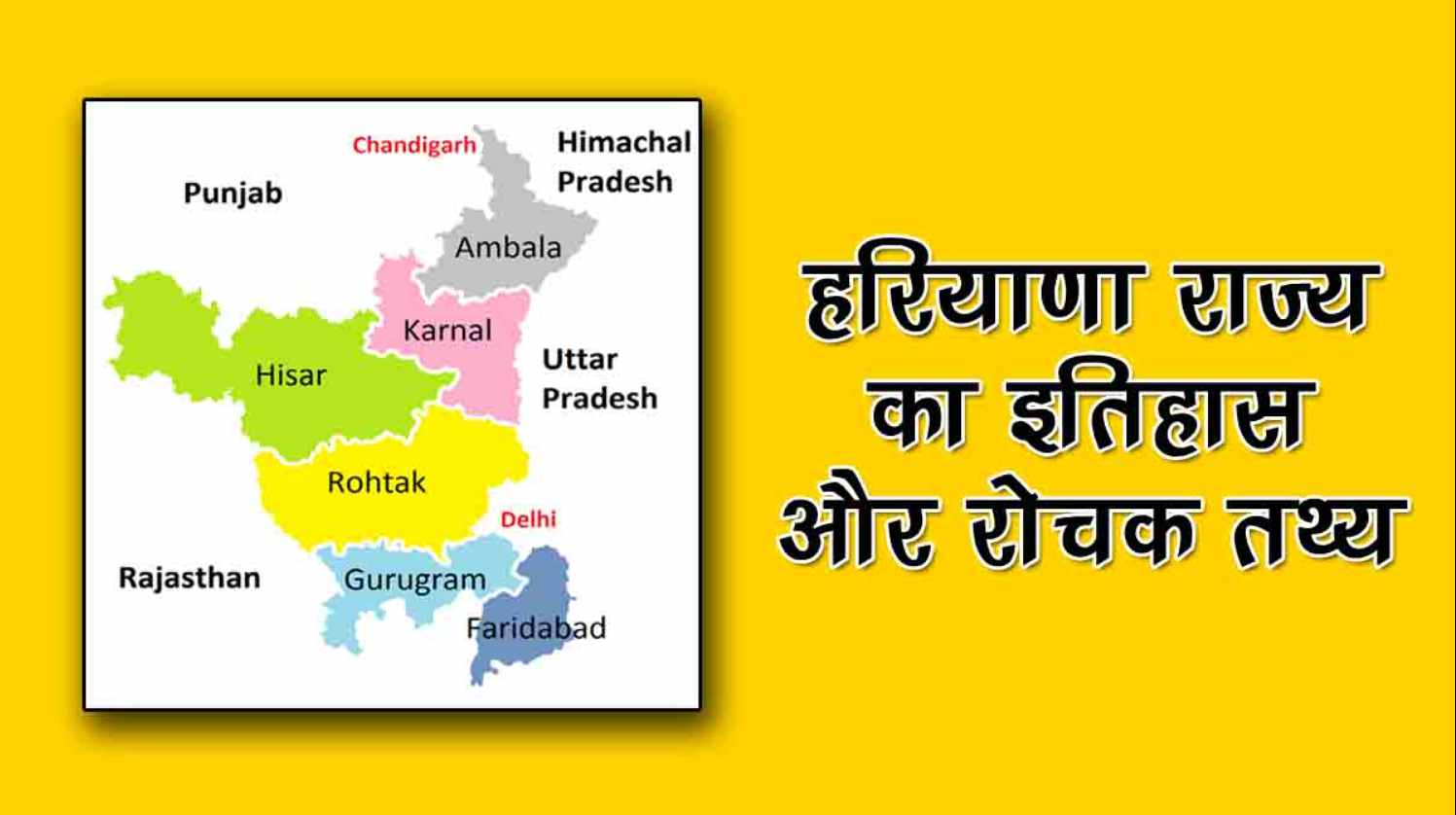
The history of Haryana is quite old and dates back to the Indus Valley Civilization and the Mahabharata. Many scholars are of the belief that the name Haryana has been derived from two Sanskrit Word, Hari (God) and Aranya (forest). A village named Rakhigarhi located in Hisar district in the state is a site that is more than 5000 years old and indicates the presence of the Indus Valley Civilization as a drainage system, paved roads, and terracotta sculptures have been unearthed here. Historians are of the belief that the evidence found at the Rakhigarhi village strongly suggests that Ghaggar Basin is the place where apparently Indus Valley Civilization began and later spread to Indus Valley areas. Mitathal and Banawali are the other two places in Haryana which are sites of Indus Valley Civilization.
The epic battle of Mahabharata was fought in Kurukshetra along with three other battles in Panipat which are believed to have shaped the present future of India. In Indian mythology, Haryana has been called Brahmavart, the place from where the Hindu religion and social system flourished and spread across to the rest of India. Therefore, it can be said that many concepts and systems of the Hindu religion and society were formulated in the part flat and part hilly lands of Haryana. Also in the greatest epic of all time, the Mahabharata, Kurukshetra was the place where the fierce battle between Kaurava and Pandava was fought and it was during this fight that Lord Krishna had delivered a celestial sermon which went on to become the most sacred scriptures of Hindu religion.
Delhi in the medieval period was a prized possession; Haryana due to its location and proximity with Delhi served as an entry point to it. Invaders and crusaders from around the world poured in through Haryana which led to fierce battles which shaped the history of India. When the end of the 14th century was nearing, Timur Lang invaded Delhi with the help of his massive army. The Lodhi dynasty, which was ruling Delhi, was defeated in the year 1526 during the First Battle of Panipat. After a period of 30 years, the Mughals led by Akbar were victorious once again in 1556. The third battle of Panipat was fought in the mid-18th century, where the Marathas who were ruling Haryana then were defeated by Afghans who were fighting under Ahmed Shah Abdali.
Formation
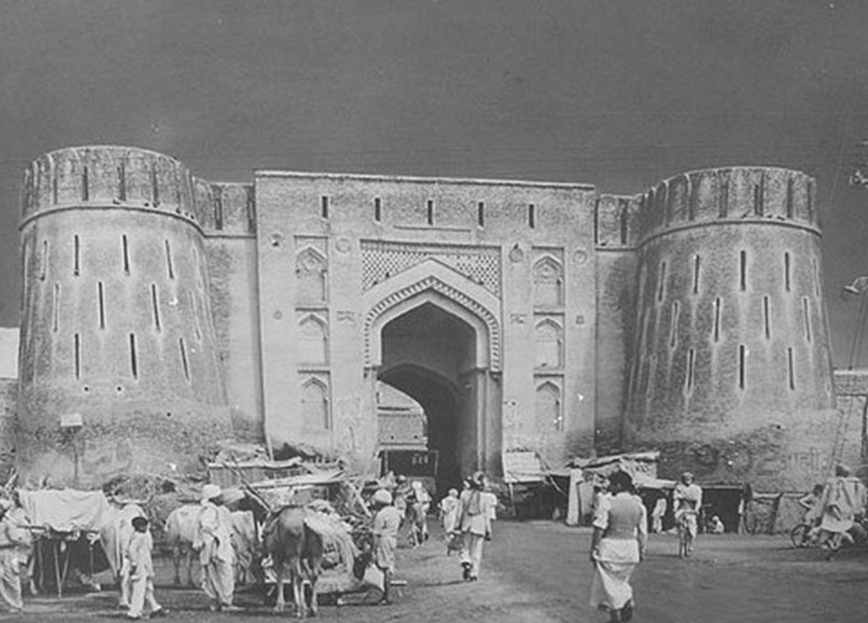
- Haryana as a state came into existence on 1 November 1966 the Punjab Reorganization Act (1966). The Indian government set up the Shah Commission under the chairmanship of Justice JC Shah on 23 April 1966 to divide the existing state of Punjab and determine the boundaries of the new state of Haryana after consideration of the languages spoken by the people. The commission delivered its report on 31 May 1966 whereby the then-districts of Hisar, Mahendragarh, Gurgaon, Rohtak and Karnal were to be a part of the new state of Haryana. Further, the tehsils of Jind and Narwana in the Sangrur district – along with Naraingarh, Ambala, and Jagadhri – were to be included.The commission recommended that the tehsil of Kharar, which includes Chandigarh, the state capital of Punjab, should be a part of Haryana. However Kharar was given to Punjab. The city of Chandigarh was made a union territory, serving as the capital of both Punjab and Haryana. Bhagwat Dayal Sharma became the first Chief Minister of Haryana.
Demographic Profile
- According to India’s 2011 census data, Haryana comprised 5.96 percent of India’s population. It had a population of 25.35 million, of which 13.5 million were male while 11.85 million were women. From 2017 to 18, Haryana’s literacy rate was 75.5 percent, which was higher than the national average of 73 percent.
Geography Of Haryana
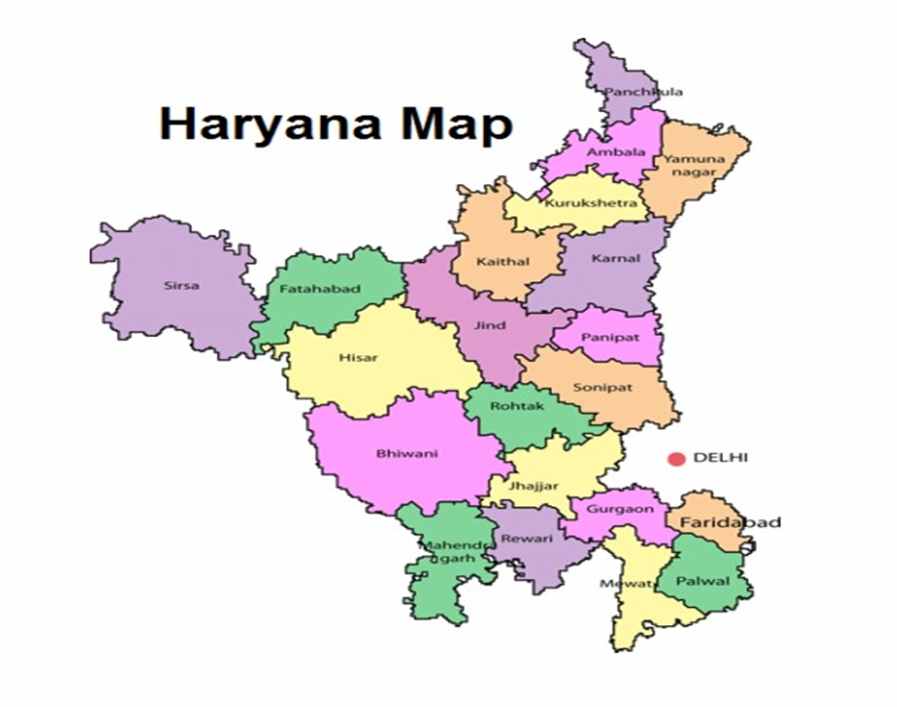
- Haryana is a state which is completely landlocked bordered by Himachal Pradesh and Punjab in the north, Rajasthan in the west and the south and Uttarakhand in the south. Although it lies at the end of the Aravalli hills, most of the Haryana is plain baring few areas like Gurgaon which shows isolated hills and ridges. It is located between latitudes 27°39′ to 30°35′ N and between longitude 74°28′ and 77°36′ E. The altitude of Haryana is variable and lies between the ranges of 700 to 3600 feet above the sea level. 1,553 km2 areas are covered by forest with tropical vegetation. There are four distinct geographical features in Haryana which are:
- Yamuna-Ghaggar plain
- Shivalik Hills to the northeast
- Plains to the southwest
- Aravalli mountain in the south
Religion
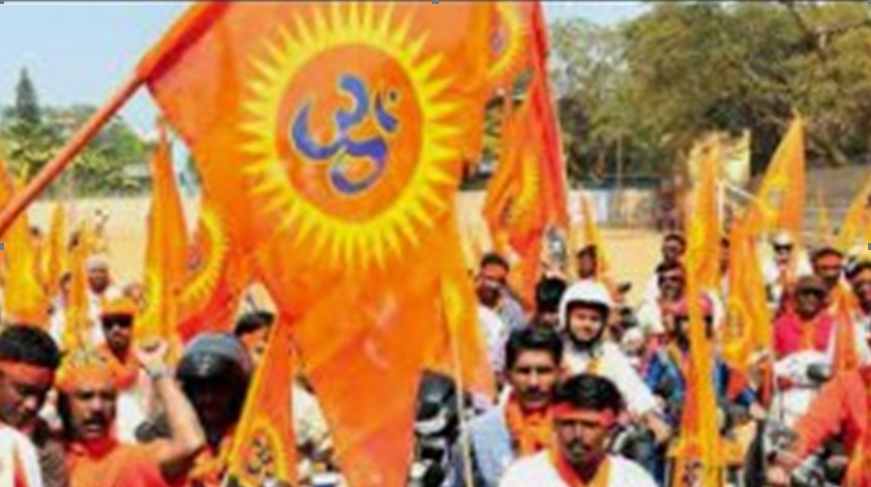
According to the 2011 census, of a total 25,350,000 population of Haryana, Hindus (87.46%) constitute the majority of the state’s population with Muslims (7.03%) (Mainly Meos) and Sikhs (4.91%) being the largest minorities.
Muslims are mainly found in the Nuh. Haryana has the second-largest Sikh population in India after Punjab, and they mostly live in the districts adjoining Punjab, such as Sirsa, Jind, Fatehabad, Kaithal, Kurukshetra, Ambala, and Panchkula.
Language
- The official language of Haryana is Hindi. Several regional languages or dialects, often subsumed under Hindi, are spoken in the state. Predominant among them is Haryanvi (also known as Bangru), whose territory encompasses the central and eastern portions of Haryana. Hindustani is spoken in the northeast, Bagri in the west, and Ahirwati, Mewati, and Braj Bhasha in the south. There are also significant numbers of speakers of Urdu and Punjabi, the latter of which was recognized in 2010 as a second official language of Haryana for government and administrative purposes. After the state’s formation, Telugu was made the state’s “second language” – to be taught in schools – but it was not the “second official language” for official communication. Due to a lack of students, the language ultimately stopped being taught. Tamil was made the second language in 1969 by Bansi Lal to show the state’s differences with Punjab although there were no Tamil speakers in Haryana at the time. In 2010, due to the lack of Tamil speakers, the language was removed from its status. There are also some speakers of several major regional languages of neighboring states or other parts of the subcontinent, like Bengali, Bhojpuri, Marwari, Mewari, Nepali and Saraiki, as well as smaller communities of speakers of languages that are dispersed across larger regions, like Bauria, Bazigar, Gujari, Gade Lohar, Oadki, and Sansi.
Culture

Fair
1. Surajkund International Crafts Mela: It is celebrated at, Surajkund, District Faridabad. The Mela is organized by the Surajkund Mela Authority & Haryana Tourism in collaboration with Union Ministries of Tourism, Textiles, Culture, and External Affairs. A large number of renowned national and international folk artists and cultural groups present day performances at both the Chaupals, the open-air theatres, located in the Mela premises. In 2013, the fair was upgraded to an international level and in 2015, a record number of 20 countries participated in the Mela. For the 33rd Surajkund International Crafts Mela-2019, the state of Maharashtra has been chosen to be the Theme State. Thailand is the Partner Nation Country for the Year 2019.
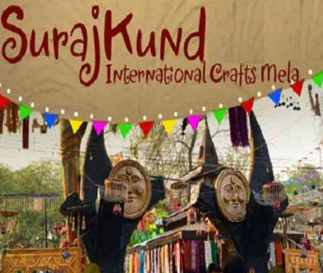
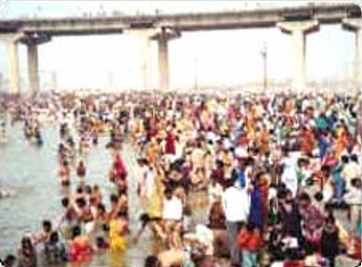
2. Gopal-Mochan Fair: In Ambala, the most famous fair is held at Gopal-Mochan near Bilaspur in Jagadhri tehsil. There is a sacred tank of the same name in the place.
3. Masani Fair: Haryana’s most famous fair is held in honor of the goddess of smallpox, Masani whose temple is in Gurgaon village.
Music
- Haryana has its own unique traditional folk music, folk dances, Saang (folk theatre), cinema, belief systems such as Jathera (ancestral worship), and arts such as Phulkari and Shisha embroidery.
1. Folk theatre and dances: Folk music and dances of Haryana are based on satisfying the cultural needs of primarily agrarian and martial natures of Haryanavi tribes. Haryanvi musical folk theatre’s main types are Saang, Rasa Lila, and Ragini. The Saang and Ragini form of theatre was popularized by Lakhmi Chand. Haryanvi folk dances and music has fast energetic movements. Three popular categories of dance are festive-seasonal, devotional, and ceremonial-recreational. The festive-seasonal dances and songs are Gogaji/Gugga, Holi, Phaag, Sawan, Teej. The devotional dances and songs are Chaupaiya, Holi, Manjira, Ras Leela, Ragini’s). The ceremonial-recreational dances and songs are of following types: legendary bravery (Kissa and Ragini of male warriors and female Satis), love and romance (Been and its variant Nāginī dance and Ragini), ceremonial (Dhamal Dance, Ghoomar, Jhoomar (male), Khoria, Loor, and Ragini).
2. Folk music and songs: Haryanvi folk music is based on day-to-day themes and injecting earthly humor enlivens the feel of the songs. Haryanvi music takes two main forms: “Classical folk music” and “Desi Folk music” (Country Music of Haryana), and sung in the form of ballads and love, valor and bravery, harvest, happiness, and pangs of the parting of lovers.
3. Classical Haryanvi folk music: Classical Haryanvi folk music is based on Indian classical music. Hindustani classical ragas, learned in Gharana Parampara of guru–shishya tradition, are used to sing songs of heroic bravery (such as Alha-Khand (1163–1202 CE) about the bravery of Alha and Udal, Jaimal and Patta of Maharana Udai Singh II), Brahmas worship and festive seasonal songs (such as Teej, Holi and Phaag songs of Phalgun month near Holi). Bravery songs are sung in high pitch.
4. Desi Haryanvi folk music: Desi Haryanvi folk music, is a form of Haryanvi music, based on Raag Bhairvi, Raag Bhairav, Raag Kafi, Raag Jaijaivanti, Raag Jhinjhoti and Raag Pahadi and used for celebrating community bonhomie to sing seasonal songs, ballads, ceremonial songs (wedding, etc.) and related religious legendary tales such as Puran Bhagat. Relationship and songs celebrating love and life are sung in a medium pitch. Ceremonial and religious songs are sung in low pitch. Young girls and women usually sing entertaining and fast seasonal, love, relationship, and friendship related songs such as Phagan (song for eponymous season/month), Katak (songs for the eponymous season/month), Samman (songs for the eponymous season/month), bande-bandi (male-female duet songs), sathne (songs of sharing heartfelt feelings among female friends). Older women usually sing devotional Mangal Geet (auspicious songs) and ceremonial songs such as Bhajan, Bhat (wedding gift to the mother of bride or groom by her brother), Sagai, Ban (Hindu wedding ritual where pre-wedding festivities starts), Kuan-Poojan (a custom that is performed to welcome the birth of a child by worshiping the well or source of drinking water), Sanjhi and Holi festival.
5. Socially normative-cohesive impact: Music and dance for Haryanvi people is a great way of demolishing societal differences as folk singers are highly esteemed and are sought after and invited for events, ceremonies, and special occasions regardless of their caste or status. These inter-caste songs are fluid in nature, and never personalized for any specific caste, and they are sung collectively by women from different strata, castes, dialects. These songs do transform fluidly in dialect, style, words, etc. This adoptive style can be seen from the adoption of tunes of Bollywood movie songs into Haryanvi songs.
With the coming up of a strongly socio-economic metropolitan culture in the emergence of urban Gurgaon (Gurugram) Haryana is also witnessing community participation in public arts and city beautification. Several landmarks across Gurgaon are decorated with public murals and graffiti with cultural cohesive ideologies and stand the testimony of a lived sentiment in Haryana folk.
Dance Forms
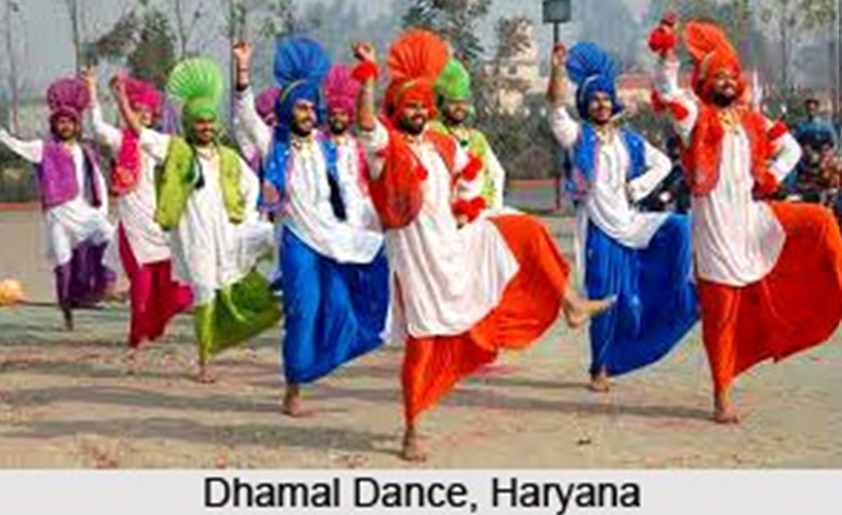
1. Dhamal is a dance form, whose origin goes back to the days of the Mahabharata. The Dhamal dance is especially popular in the areas around Gurgaon, inhabited by Ahirs. At the beginning of the dance, the player gives the first long note, then Dhol, Tasha, Nagara, pick up the beat and the dance begins. Some of the dancers carry large Daphs in their hands. These are edged with frills of brightly colored fabric; others carry sticks (‘Shuntis’) of medium length, wrapped in tinsel and tasseled at both ends.\
2. Daph is another form of seasonal dance of farmers depicting the joyful emotions of a good harvest and the advent of spring. It is a sort of community dance. The “Daph”, the one-sided drum, and the sound of the ornaments worn by the women offer the music.
3. Phag dance done basically in the lunar month of Phalgun seeks to celebrate the colorful festival of Holi. The dancers come together to the sound of ‘Tasha’, ‘Nagara’ and ‘Dhol’. The men come running & singing the traditional songs of ‘Phalgun’, followed by women carrying ‘Koraras’, the knotted lengths of cloths. They run about the men hitting with the ‘Koraras’ while men defend themselves as best as they can with ‘Shuntis’.
4. Ghoomar is marked by circular movements of the dancers, Ghoomar is generally performed by the girls of the areas bordering Rajasthan. The dancers form a circle and move about clapping and singing, while the tempo of the dance is accelerated. The accompanying songs are full of satire and humor and references to contemporary events, while the dancers twirl around in pairs.
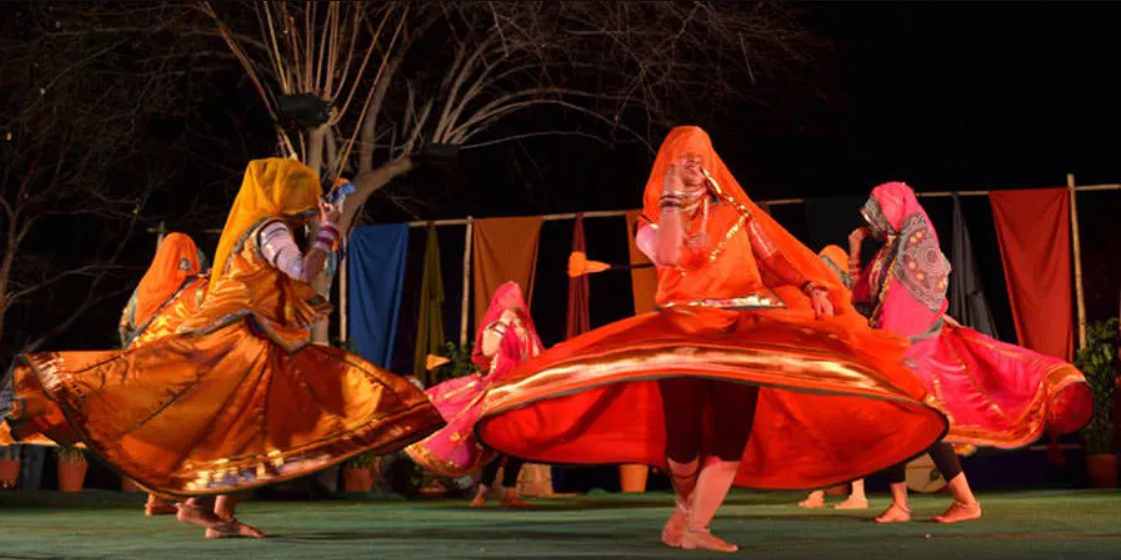
5. Jhumar dance is named after an ornament called as “Jhumar” commonly worn on forehead by young married women is exclusively danced by women. It is otherwise known as ‘Hariyanvi Gidda’. Dressed in colorful costumes, the ladies dance in gay abandons singing and clapping with the beats of ‘dholak’ and ‘thali’ while gracefully moving in a circle.
6. Loor is performed by girls during the month of ‘Phalguna’ (pring), and is so named because the word ‘Loor’ means girl in the Bangar area of Haryana. Performed during the Holi festival, this dance marks the spring season and the sowing of the Rabi crops. The song is generally in the form of questions and answers.
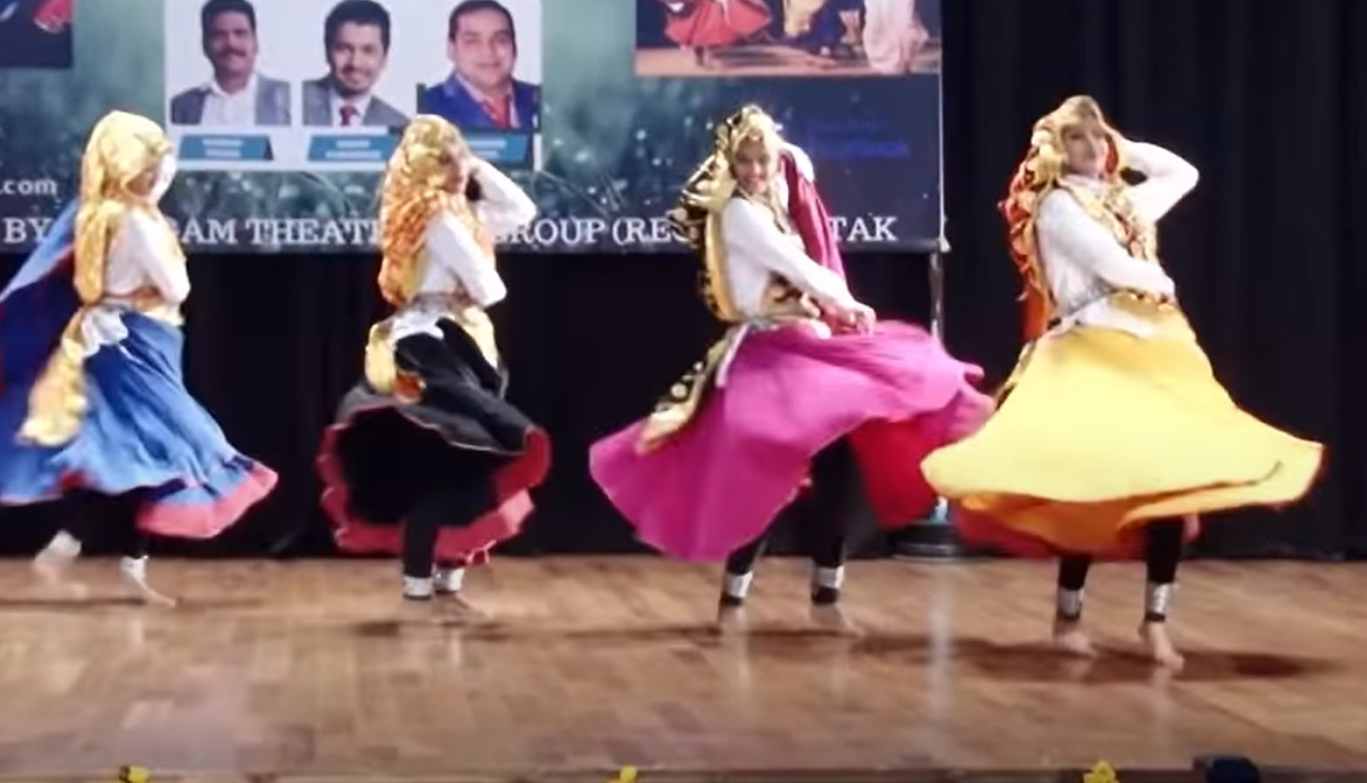
7. Gugga dance is performed by Gugga (a saint) devotees; they dance and sing around his grave to show their devotion. The Gugga is exclusively a male dance, performed in the procession taken out in memory of saint Gugga.
Arts And Crafts
- The art and craft of Haryana mainly cover the range of pottery, embroidery, and weaving. The colorful Phulkari dupatta of Haryana is famous in India and abroad. The art and craft of Haryana also include sculpture and murals both of Persian and Mughal style. Woven furniture, artistic sheet metal work, wooden bead making, zari & tilla jutti (leather footwear), lacework, bone carving, wood carving are some of the artistic crafts that Haryana is known for. Panipat in Haryana is famous for its handloom tradition, especially rugs and upholstery fabric which is the reason why it is known as a major textile town in India. Haryana is famous for two types of woven furniture Mudhas (round stools) and chairs made of sarkanda (a reed) from Farukh Nagar and Pidhis from Sonipat which are essentially wooden stools with seats is woven in cotton threads or sutli. One of the interesting items made at Jhajjar is a pitcher made from clay. Interestingly, the clay gives a sweet taste to the water stored in the pitcher.
Festivals

1. Gugga Naumi: This is a religious festival, celebrated all over Haryana. It is connected with snake worship and observed in August-September.
2. Gangore: It is a festival dedicated to the goddess of abundance i.e. Gauri. Celebrated every year in Chet or March month, this festival is specially meant for young girls who pray for good husbands. In this festival, people take out processions carrying the idol of Gangore.
3. Lohri: Lohri is celebrated in the state of Haryana just before the day of Makar Sankranti. For the community of Punjabis, the festival of Lohri is a very special festival.
4. Baisakhi: The festival of Baisakhi is a very important one for the Punjabis in the state of Haryana and is celebrated with joyous music and dancing. It falls every year on 13th April and once in 36 years, it falls on 14th April. It was on this particular day that the tenth Guru of the Sikhs, Guru Gobind Singh, founded the Khalsa in the year 1699.
5. Teej : This festival is celebrated on Sawan Sudi. It is celebrated to welcome the season of monsoon. After the first showers of the rainy season, a small insect called Teej in the state of Haryana comes out from the earth’s soil.
6. Pinjore Heritage Festival: It takes place at Pinjore, a small town located at a distance of 20 kilometers from Chandigarh. It is home to some of the best-terraced gardens in the country. These gardens were planned by Fidai Khan during the reign of Jahangir.
Cuisine
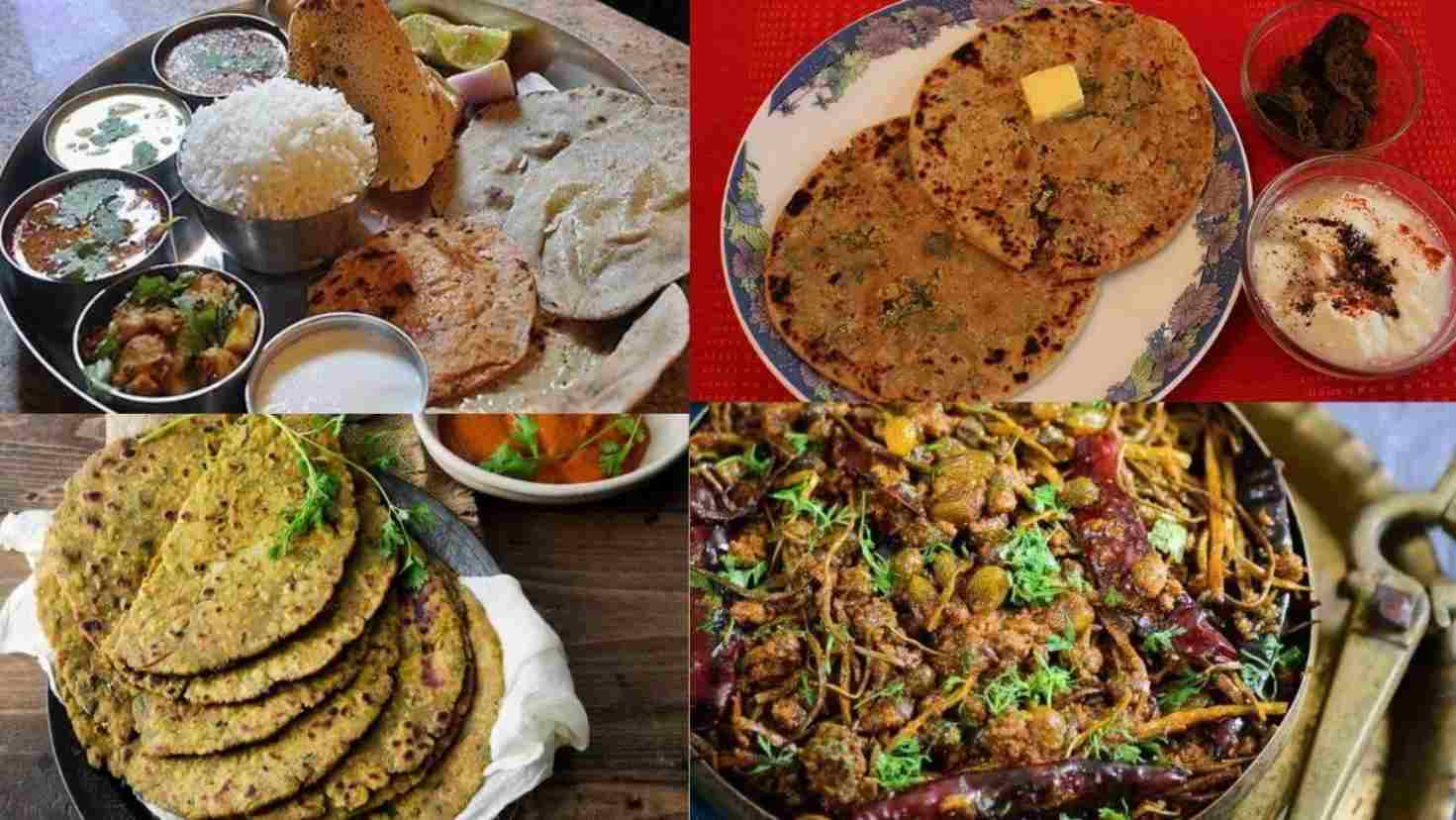
- Haryana offers a mix of traditional Indian dishes that can make anyone salivate. The state is primarily agricultural in nature, and as such its residents are used to having easy access to fresh vegetables and abundant cereals. The flavors and culinary practices of neighboring states of Punjab and Rajasthan have slowly seeped into Haryana, resulting in a truly amazing cocktail of recipes that satiate one’s hunger and delight the taste buds. Haryana has also received some of the highest industrial investments in the past few years, leading to a number of national and international eating chains marking their presence here. Food in Haryana is a charming mixture of traditional and modern, and the sheer amount of choices available will definitely make everyone happy.
=> Some famous dishes of Haryana include:-
- Rajm, Sukhi Chana Dal, Dahi Bhalle, Sarso ka Saag, Singri ki Sabzi, Bathua Raita, Bajra-Aloo Roti with Makkhan, Churma, Kheer and Kachri ki sabzi.
Climate In Haryana
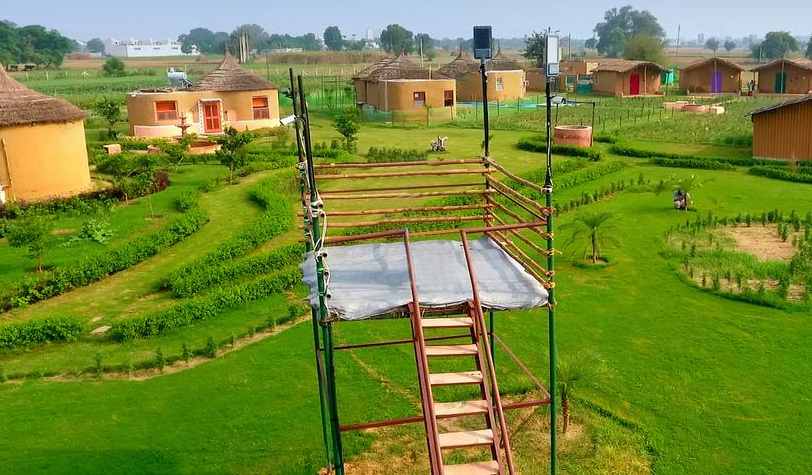
- Haryana experiences a tropical climate and is similar to other states that lie in the northern plains. The summers are extremely hot and the temperature sometimes soars up to 45 degrees Celsius. The hottest months of the year in Haryana are May, June, and July. From August onwards, the state receives moderate rainfall in the Shivalik region receiving maximum rainfall, and the Aravalli region receives the lowest. The winter sets in the month of December and gets as cool as 4-5 Degree Celsius in January. Most of the rainfall occurs in the month of July, August, and September sometimes causing minor local floods.
Rivers Of Haryana
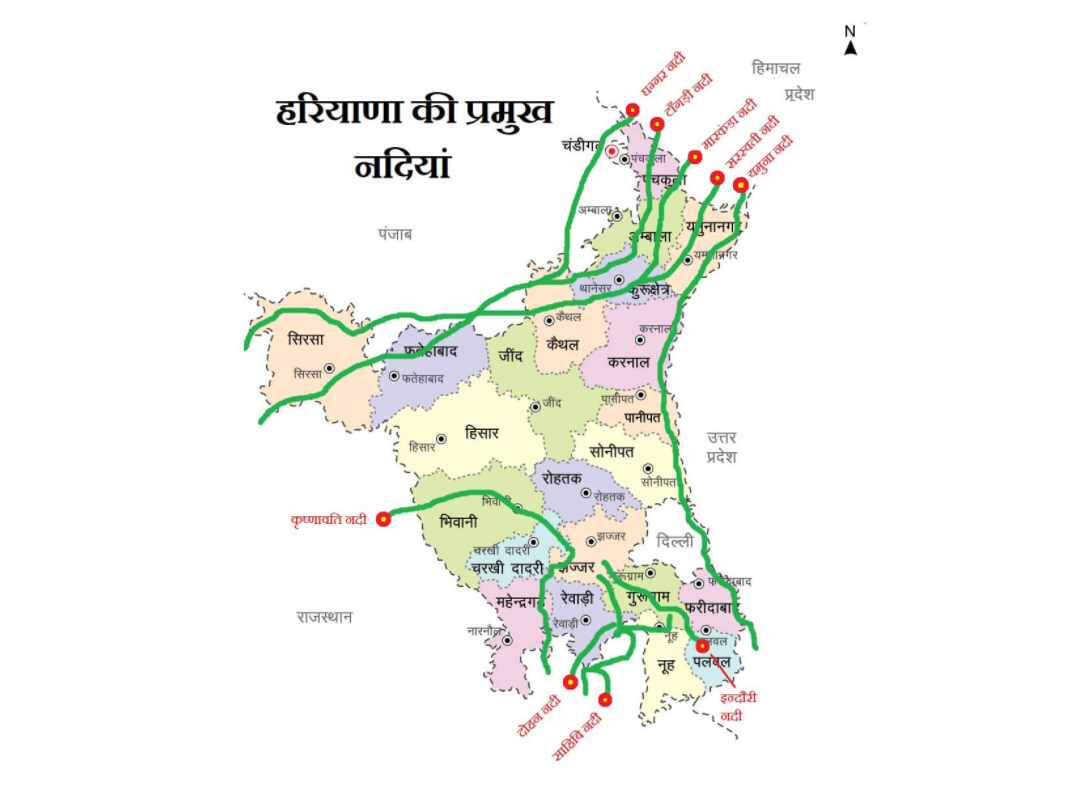
- There are many rivers that flow through Haryana. Most of the rivers that flow in the state come from the Himalayas. These rivers have been instrumental in pushing agriculture in Haryana. Many of these rivers are seasonal and few of them are perennial.
1. River Yamuna
River Yamuna flows through the eastern boundary of the state.
2. Ghaggar River
It is the main seasonal river of Haryana. The river starts from the outer Himalayas between Yamuna and Sutlej. It enters the plain of Haryana in the Panchkula district near Pinjore. The course of the river is 460 km long.
3. Markand River
It is also a seasonal stream that flows from Shivalik Range and reaches Haryana near Ambala. The river becomes quite torrential and devastating during the monsoons and causes floods on a local level.
4. Sahibi River
The River is almost extinct but used to flow from Jaipur moving towards Rewari and Jhajjar in Haryana.
Power Plants/Station
- Haryana State has always given high priority to the expansion of electricity infrastructure, as it is one of the most important inputs for the development of the state. Haryana was the first state in the country to achieve 100% rural electrification in 1970 as well as the first in the country to link all villages with all-weather roads and provide safe drinking water facilities throughout the state.
=> Powers in the state are:-
- Deenbandhu Chhotu Ram Thermal Power Station, 600MW, Yamunanagar
- Indira Gandhi Super Thermal Power Project, 1500MW, Jhajjar
- Jhajjar Power Station, 1500MW
- Panipat Thermal Power Station I, 440MW
- Panipat Thermal Power Station II, 920MW
- Rajiv Gandhi Thermal Power Station, 1200MW, Hisar
Canals
Western and Eastern Yamuna Canal is the oldest canal of the state which emerges from the Tajewala barrage. These branches feed water, for irrigation purposes, to the land areas of Karnal, Panipat, Sonepat, Jind, and Rohtak districts.
Gurgaon Canal has been drawn at the Okhla barrage from the Yamuna.
Bhakra Canal has been drawn from the Sutlej River near Nangal. The fields of Sirsa, Rohtak, and Hissar districts are supplied water through this canal.
Bhiwani Canal is a small canal, drawn out of Bhakra Canal it passed through the district of Bhiwani. Jawahar Lal Canal has also been drawn from Bhakra Canal and passes through Mahendragarh.
Flora And Fauna
Forest cover in the state in 2013 was 3.59% (1586 km2) and the Tree Cover in the state was 2.90% (1282 km2), giving a total forest and tree cover of 6.49%.In 2016–17, 18,412 hectares were brought under tree cover by planting 14.1 million seedlings. Thorny, dry, deciduous forest and thorny shrubs can be found all over the state. During the monsoon, a carpet of grass covers the hills. Mulberry, eucalyptus, pine, kikar, shisham, and babul are some of the trees found here. The species of fauna found in the state of Haryana include blackbuck, nilgai, panther, fox, mongoose, jackal, and wild dog. More than 450 species of birds are found here. Haryana has two national parks, eight wildlife sanctuaries, two wildlife conservation areas, four animal and bird breeding centers, one deer park, and three zoos, all of which are managed by the Haryana Forest Department of the Government of Haryana. Sultanpur National Park is a notable Park located in Gurugram District. There is a wide variety of fauna found in the state which includes mammals like monkeys, cats, leopards in a few regions, common mongoose, jackals, Indian fox, nilgai, and blackbuck. The forests of the Morni Hills and Aravalli Hills region have Wild Boars. You can also find various species of birds at the Sultanpur Bird Sanctuary and Bhindawas Sanctuary. Elephants can also be seen in the Kalesar Forest. Greylag goose, Teal, Bar-headed goose, Brahminy duck, common Shelduck, etc. are some of the variety of birds that are seen in Haryana. A variety of scavenger and predator birds like vultures, black kite, tawny eagle, king vulture, greater spotted eagle, etc. are seen in the jungles and the plains in Haryana. Many colorful birds including Coppersmith Barbet, Asian Koel, White Ibis, and lapwings are seen in the state. Apart from birds, snakes, lizards, frogs, and various varieties of fish are found in Haryana.
The flora found in the Haryana mainly comprises thorny shrubs, deciduous forests, and thorns owing to its dry climate. When the monsoon sets in, a few isolated hills and ridges are covered with green grass. You can also find eucalyptus, Pine, Mulberry, Kikar, Babul, and Shisham trees all over the state. The presence of such flora ensures that the state is a pioneer in producing wood. Varieties of succulent herbs with medicinal properties are grown in the terrains of the state.
=> The Forests Department, Haryana of the Government of Haryana maintains the following Wildlife Sanctuaries:-
- Bhindawas Wildlife Sanctuary, Jhajjar
- Khaparwas Wildlife Sanctuary, Jhajjar
- Nahar Wildlife Sanctuary, Rewari
- Chhilchhila Wildlife Sanctuary, Kurukshetra
- Kalesar Wildlife Sanctuary, Yamunanagar
- Abubshahar Wildlife Sanctuary, Sirsa
- Khol Hi-Raitan Wildlife Sanctuary, Panchkula
- Bir Shikargah Wildlife Sanctuary, Panchkula.
=> The Forests Department of Haryana runs the following breeding centres in the state:-
- Chinkara Breeding Centre, Kairu, Bhiwani
- Crocodile Breeding Centre, Bhor Saidan, Kurukshetra
- Peacock & Chinkara Breeding Centre, Jhabua, Rewari
- Pheasant Breeding Centre, Morni, Panchkula
- Vulture Conservation and Breeding Centre, Pinjore
=> Conservation Reserves:-
- Saraswati Conservation Reserve, Kaithal
- Bir Bara Ban Conservation Reserve, Jind
Environment And Ecological Issues
- Haryana Environment Protection Council is the advisory committee and Department of Environment, Haryana is the department responsible for the administration of the environment. Areas of Haryana surrounding Delhi NCR are the most polluted. During the smog of November 2017, the Air quality index of Gurgaon and Faridabad showed that the density of Fine particulates (2.5 PM diameter) was an average of 400 PM and a monthly average of Haryana was 60 pm. Other sources of pollution are exhaust gases from old vehicles, stone crushers, and Brick Kiln. Haryana has 7.5 million old vehicles, of which 40% are old more polluting vehicles, besides 500,000 new vehicles are added every year. Other majorly polluted cities are Bhiwani, Bahadurgarh, Dharuhera, Hisar, and Yamunanagar.
Agriculture
About 70% of Haryana residents are engaged in agriculture. Wheat and rice are the major crops. Haryana is self-sufficient in food production and the second largest contributor to India’s central pool of food grains. Haryana contributed significantly to the Green Revolution in India in the 1970s that made the country self-sufficient in food production. The state has also significantly contributed to the field of agricultural education in the country. Asia’s one of the biggest agricultural universities – Chaudhary Charan Singh Haryana Agricultural University is located at Hisar, which has already made a significant contribution in ushering ‘Green Revolution’
Dairy Farming: Dairy farming is also an essential part of the rural economy. Haryana has a livestock population of 98.97 lakh. Milk and milk products form an essential part of the local diet. Haryana, with 660 grams of availability of milk per capita per day, ranks at number two in the country as against the national average of 232 grams. There is a vast network of milk societies that support the dairy industry. The National Dairy Research Institute at Karnal and the Central Institute for Research on Buffaloes at Hisar are instrumental in the development of new breeds of cattle and the propagation of these breeds through embryo transfer technology. The Murrah breed of water buffalo from Haryana is world-famous for its milk production and is termed as ‘Black Gold’. Due to the extensive irrigation system of the state,(agriculture), Haryana has emerged as the leading producer of crops in the country, and agriculture remains the primary occupation for the majority of the residents of the state.
Economy Profile

- Haryana’s GSDP grew at a Compound Annual Growth Rate (CAGR) of 12.66 percent between 2011 and 2012, as well as between 2017 and 2018, reaching an estimated US$94.4 billion between 2017 and 2018. In the same period, it had a per capita income of US$2,975.29, while its GSDP grew 11.6 percent, which was higher than India’s overall GDP growth rate of 9.8 percent. From 2017 to 2018, Haryana contributed about 3.63 percent to India’s economy.
Budget
- According to advance estimates, GSDP of Haryana for 2018-19 at current prices has been estimated at Rs.7.07 lakh crore, contributing 3.75 per cent to the all- India GDP of Rs. 188.41 lakh crore. The state budget has been pegged at Rs 1, 32,165.99 crore, an increase of 14.73 per cent over outlay budget estimate. Fiscal deficit of State for 2018-19 recorded as 2.90% while Revenue deficit is 1.20%. Haryana’s GSDP growth rate is stood at 8.2% while National GDP growth rate is 7.2% for 2018-19. No fresh taxes have been proposed and the existing rates of taxes have been left untouched. Rs 46,562 crore have been allocated to the schemes pertaining to17 Sustainable Development Goals (SDGs) being implemented in the state. Notification of Bio-Energy Policy-2018 to promote biomass energy projects in the state, targeting production of 150 MW by 2022. The government also plans to bring about a scheme to provide solar water pumping systems to farmers to meet their irrigation needs. Under this scheme, farmers would be provided 2 HP and 5HP solar water pumping systems with 75 per cent State Subsidy and 25 per cent user share. The government has announced a price of Rs 340 per quintal for sugarcane this year, which is once again the highest in the country. For the first time, a subsidy of Rs 16 per quintal was given to facilitate the payment of sugarcane arrears to the farmers during 2017-18. The state government has initiated Bhavantar Bharpayee Yojana for four horticulture crops- Potato, tomato, onion and Cauliflower, in order to ensure that every farmer recovers at least the cost of cultivation, in the eventuality of drop in market prices. To maximise the quantity of crops, the state government has registered farmers under the e-kharid Portal through which they will get to know the Minimum Support Price of their produce. A record procurement of 2.7 lakh tonnes was made in case of mustard and 1.80 lakh million tonnes of bajra this year. Work has been initiated for setting up new thematic market by the Haryana State Agricultural Marketing Board, e.g. “State of the Art” integrated Apple Market at Pinjore, wholesale market for spices at Sirsa and Kundli, and wholesale market for flowers at Gurgaon. The state government has announced a compensation of Rs 12,000 per acre for the crop damage caused by natural calamity. Under the ‘Horticulture Vision’, the state government aims to double the area under horticulture from the present 8.17 per cent to 15 per cent and triple the produce in the state by 2030. In this direction, the Horticulture Department has formed 96 Farmer Producer Organizations covering 34,219 farmers, who will be provided with the requisite infrastructure of pack houses and given training in agriculture business operations. In order to provide socio-economic security to the livestock owners of the state, the Pandit Deen Dayal Upadhyaya Livestock Insurance scheme has been launched in 2018-19. With a view to tackle the menace of stray bulls in the state, the state government finalized the procurement of 2 lakh sexed semen for artificial insemination of crossbred and indigenous cattle. 20 Livestock Census has been started for the first time in digital form, from the last week of January 2019. A Departmental app is also being started along with the Government of India app, to record the detailed information on each animal with its photo through “Har Pashu Ka Gyan” mobile application using electronic tablets. Under the “Pashu Sanjivni Sewa”, on call mobile veterinary services at the doorstep of farmers, would be provided initially in three districts, (Jind, Yamunanagar, Mewat) as a pilot project and the same would eventually be extended in the entire State. Haryana Fishery Resource Development Authority has been established for the development of waterlogged areas in Charkhi Dadri, Jind and Jhajjar districts. This will enhance the income of fish farmers by utilizing the 16,000 identified waterlogged areas. Under the ‘Assistance to Milk Cooperatives’ scheme, the state government has provided assistance to purchase 700 Automatic Milk Collection Units/Data Processor Milk Collection Units, to village level milk cooperative societies with the objective to increase transparency and efficiency of milk collection as well as expanding it. Aviation hub and aerospace/defence manufacturing park has been proposed at Hisar. There is also proposal to set up a science city and site of Aravali Biodiversity Park, Nathupur village in Gurugram is being finalised for it. A sub-regional science centre will also be set up at Ambala. Rs 100 crore have also been allocated for completion of the construction of SYL canal.
Industrial Profile
Major industries in Haryana are automotive, IT, agriculture, and petrochemicals. The state is preferred by automotive and automotive component companies. It produces two-thirds of all passenger cars, 50 percent of all tractors, and 60 percent of all motorcycles produced in India. Some of the well-known automotive companies located in Haryana include the Escorts Group, Hero MotoCorp Ltd, Maruti Suzuki India, and Yamaha Motors. In addition, the state had been identified as a manufacturing hub by the national government.
As the third-largest exporter of IT software in India, Haryana boasts a significant IT sector that is also preferred by IT/ITeS facilities worldwide. From 2016 to 2017, the state accounted for 6.2 percent of India’s software exports, with a total value of US$7.2 billion.
Agriculture, especially food grains, is also a key industry. From 2016 to 2017, Haryana accounted for seven percent of the country’s agricultural exports and in the period 2017 to 2018, food grain production was 17.48 million tonnes. In the same period, it exported US$1.3 billion worth of agricultural products. Haryana is responsible for producing more than 60 percent of India’s basmati rice. Haryana is India’s fourth-largest producer of cotton. It contributes around six percent of the country’s total production. Its availability as a raw material for textiles provides it with a competitive advantage in the textiles sector, which employs around one million people. Its exports of cotton-made garments were worth US$887.84 million in FY 18.
Petrochemicals are also an important sector in Haryana’s economy. Commissioned by the Indian Oil Corporation Limited in 1996, Panipat Refinery has a refining capacity of 15,000 million metric tonnes per annum (MMTPA). The other key player is Indian Oil Corporation Ltd (IOCL), which also has a 15 million MMTPA capacity refinery in Panipat.
Foreign Investment
- Cumulative inflows of foreign direct investment (FDI) from April 2000 to June 2018 stood at US$79.76 billion. Between 2015 and 2018 alone, the FDI injected into the state was worth US$11.93 billion. The FDIs benefitted the services, real estate, and electricity sectors. In May 2018, Haryana’s state government signed 10 Memoranda of Understanding (MOUs) with the United Kingdom for US$232.74 million worth of investments.
Tourist Attractions Of Haryana

Haryana proves to be an eclectic mix of the rural and the urban and presents some rather interesting opportunities to those who love to travel.
From booming cities like Gurgaon where thousands of companies from all over the world have their offices and people from all over the country migrate to in order to find a better career, to small villages with barely any connectivity and virtually no modern amenities, the difference that crop up between these two facets of Haryana are startling. This stark difference, however, makes for some very interesting voyages. If you want to travel to Haryana, the following are the most frequented and highly recommended places that you can visit:
1. Gurgaon: The millennial city is the economic heart of Haryana and has made a huge impact on the economy of the state. It has five-star hotels, outstanding dining places, bars, pubs, dance clubs, and more; everything that a party-loving individual can ask for.
2. Chandigarh: The capital of the state is shared with the neighboring state of Punjab, and is easily one of the most developed and well-planned cities in the entire state. Chandigarh is known as the city of gardens and sees a lot of tourists.
3. Panchkula: The satellite city of Chandigarh, plans are already in motion to make this city even better connected with the capital. It gets the name from the fact the five of the major canals that irrigate the lands of Haryana meet here.
4. Kurukshetra: The site of the epic battle of Mahabharata, Kurukshetra is mostly a pilgrim spot that is most famous for being the spot where Lord Krishna gave the famous sermon to Arjuna and disclosed the secrets of the Bhagwad Gita to him.
- There are a number of cities in the state that are a delight to visit and offer you a taste of the real Haryana. Some of them are Panipat, Ambala, Hisar, Faridabad, Karnal, Pinjore, and Sonipat.
=> Shopping Attractions in Haryana:-
- While small stores can be found virtually in every small city and town in Haryana, when talking about shopping attractions in Haryana, only a few places come to mind. The largest cities in the state have tremendously well-developed infrastructures and consequently have amazing shopping opportunities as well. Cities like Chandigarh, Gurgaon, and Faridabad are dotted with shopping malls where some of the most exclusive brands in the world can also be seen.Sector 17 in Chandigarh is also a major shopping area and sees tourists from all over the country who make a stop here to buy clothes and various other things at a bargain. Similarly, the Ambiance Mall in Gurgaon is not just the largest in the entire Delhi NCR region but also in India. The top cities in Haryana have multiple shopping centers that house national as well as international brands, and one can easily buy apparel, jewelry, gadgets, vehicles, and consumer goods made by some of the most recognizable brands on this planet.
Research
- To support its agrarian economy, both central government (Central Institute for Research on Buffaloes, Central Sheep Breeding Farm, National Research Centre on Equines, Central Institute of Fisheries, National Dairy Research Institute, Regional Centre for Biotechnology, Indian Institute of Wheat and Barley Research and National Bureau of Animal Genetic Resources) and state government (CCS HAU, LUVAS, Government Livestock Farm, Regional Fodder Station and Northern Region Farm Machinery Training and Testing Institute) have opened several institutes for research and education.
=> Research Institution of Repute:-
- Central Institute for Research on Buffaloes, Hisar
- National Dairy Research Institute, Karnal
- National Brain Research Centre, Gurgaon
- Directorate Of Wheat Research, Karnal
- National Bureau of Animal Genetic Resources, Karnal
Administration In Haryana
Haryana like any other state in India has the Governor as the head of state. Governor is appointed by the President of India and is largely a ceremonial post. The governor appoints the chief minister depending on the majority. The tenure of the governor is fixed for 5 years, however, can be transferred or discharged of the duties. The chief minister is the elected head of members of the legislature and executes the legislative powers and handles the affairs of the state. The tenure of the chief minister is 5 years or till the time he or she enjoys the majority in both the houses of the state assembly. After the completion of 5 years of government, fresh elections are held and members of a legislative assembly and members of the legislative council are chosen.
Legislative functions of Haryana are performed by the MLAs and MLCs and the executive functions are carried out by bureaucrats. Bureaucrats are permanent members of the administration. Different activities in Haryana are handled by different departments like law and order, agriculture, industry, electricity, and many more. On the political level, these departments are headed by the respective cabinet minister and Minister of states and on the executive level, the chief secretary heads the department. The chief secretary is accountable to the ministers and the chief minister and reports to them. The decentralization of the government ensures that all the departments are handled efficiently and smoothly.
Law And Order
Haryana Police force is the law enforcement agency of Haryana. Five Police Ranges are Ambala, Hissar, Karnal, Rewari, and Rohtak. Three Police Commissionerates are Faridabad, Gurgaon, and Panchkula. The cybercrime investigation cell is based in Gurgaon’s Sector 51.
The highest judicial authority in the state is the Punjab and Haryana High Court, with the next higher right of appeal to the Supreme Court of India. Haryana uses an e-filing facility.
Governance And E-Governance
- The Common Service Centres (CSCs) have been upgraded in all districts to offer hundreds of e-services to citizens, including applications of new water and sanitation connections, electricity bill collection, ration card member registration, the result of HBSE, admit cards for board examinations, online admission forms for government colleges, long route booking of buses, admission forms for Kurukshetra University and HUDA plots status inquiry. Haryana has become the first state to implement Aadhaar-enabled birth registration in all the districts. Thousands of all traditional offline state and central government services are also available 24/7 online through a single unified UMANG app and portal as part of the Digital India initiative.
Haryana Government Scheme
- Apni Beti Apna Dhan
- Ladli Scheme
- State Level Awards for Improvement in Sex Ratio to the districts, Haryana
- Devi Lal. Rashtriya Uttan Aivam Parivar Kalyan Yojna “Devi Rupak”
- Mukhya Mantri Vivah Shagun Yojna
- Housing scheme for Scheduled Castes and Denotified Tribes
- Ambedkar Medhavi Chhattar Sansodhit Yojna
- Financial Assistance for Higher Competitive entrance examinations to SC/BC candidates through private institutions.
- Creation of Employment Generation Opportunities by setting up Employment Oriented Institutes/Training Programmes.
- Scheme of Hostels for Other Backward Classes (OBCs) Boys and Girls.
Sports In Haryana
Haryana is the leading state in sports as well. Its players like Sushil Kumar have won the two successive Olympic medals in 2008 (Bronze Medal) and 2012 (Silver Medal).
Haryana women player Sakshi Malik has won Bronze Medal in the 2016 Olympics in freestyle wrestling and she has become the first woman in India who has won an Olympic medal in wrestling.
Haryana Sports Policy and Rewards played a major role in the upliftment of sports in the state.
According to the new sports policy, substantially increased award money is being given to national and international Players.
Means Of Transport In Haryana
1. Roads and Highways: A fleet of 3,864 Haryana Roadways buses covers a distance of 1.15 million km per day, and it was the first state in the country to introduce luxury video coaches. Ancient Delhi Multan Road and Grand Trunk Road, South Asia’s oldest and longest major roads, pass through Haryana. GT Road passes through the districts of Sonipat, Panipat, Karnal, Kurukshetra, and Ambala in north Haryana where it enters Delhi and subsequently the industrial town of Faridabad on its way. The 135.6 kilometers (84.3 mi) Kundli-Manesar-Palwal Expressway (KMP) will provide a high-speed link to northern Haryana with its southern districts such as Sonipat, Gurgaon, and Faridabad. The Delhi-Agra Expressway (NH-2) that passes through Faridabad is being widened to six lanes from the current four lanes. It will further boost Faridabad’s connectivity with Delhi.
2. Railway: Delhi Metro connects the national capital Delhi with NCR cities of Faridabad, Gurgaon, and Bahadurgarh. Faridabad has the longest metro network in the NCR Region consisting of 11 stations and the track length is 17 km.
3. Skyway: The Haryana and Delhi governments have constructed the 4.5-kilometer (2.8 mi) international standard Delhi Faridabad Skyway, the first of its kind in North India, to connect Delhi and Faridabad.
Healthcare
- The total fertility rate of Haryana is 2.3. The infant mortality rate is 41 (SRS 2013) and the maternal mortality ratio is 146 (SRS 2010–2012). The state of Haryana has various Medical Colleges including Pandit Bhagwat Dayal Sharma Post Graduate Institute of Medical Sciences Rohtak, Bhagat Phool Singh Medical College in District Sonipat, ESIC Medical College, Faridabad along with notable private medical institutes like Medanta, Max Hospital, Fortis Healthcare.
Education
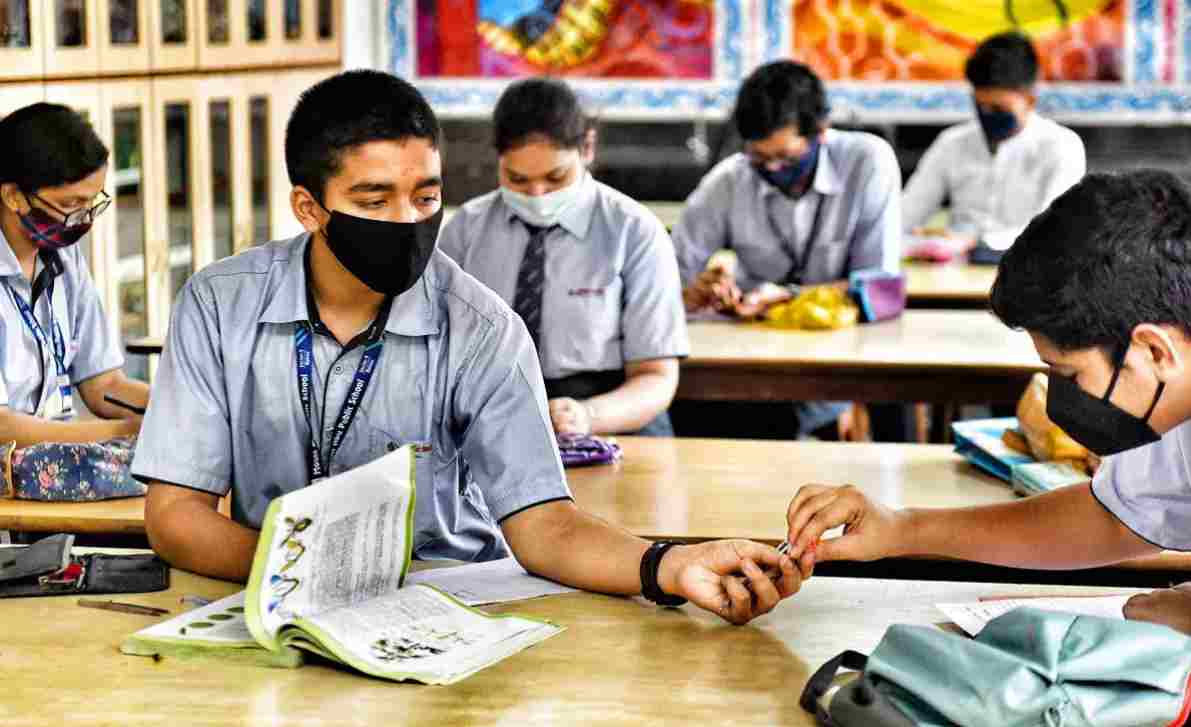
1. Literacy
- The literacy rate in Haryana has seen an upward trend and is 76.64 percent as per the 2011 population census. Male literacy stands at 85.38 percent, while female literacy is at 66.67 percent. In 2001, the literacy rate in Haryana stood at 67.91 percent of which male and female were 78.49 percent and 55.73 percent literate respectively. As of 2013, Gurgaon city had the highest literacy rate in Haryana at 86.30% followed by Panchkula at 81.9 percent and Ambala at 81.7 percent. In terms of districts, as of 2012 Rewari had the highest literacy rate in Haryana at 74%, higher than the national average of 59.5%: male literacy was 79% and female 67%.
2. Schools
Haryana Board of School Education, established in September 1969 and shifted to Bhiwani in 1981, conducts public examinations at middle, matriculation, and senior secondary levels twice a year. Over 700,000 candidates attend annual examinations in February and March; 150,000 attend supplementary examinations each November. The Board also conducts examinations for Haryana Open School at senior and senior secondary levels twice a year. The Haryana government provides free education to women up to the bachelor’s degree level.
In 2015–2016, there were nearly 20,000 schools, including 10,100 state government schools (36 Aarohi Schools, 11 Kasturba Gandhi Balika Vidyalayas, 21 Model Sanskriti Schools, 8,744 government primary schools, 3386 government middle schools, 1,284 government high schools, and 1,967 government senior secondary schools), 7,635 private schools (200 aided,6,612 recognized unaided, and 821 unrecognized unaided private schools) and several hundred other central government and private schools such as Kendriya Vidyalaya, Indian Army Public Schools, Jawahar Navodaya Vidyalaya and DAV schools affiliated to central government’s CBSE and ICSE school boards.
Universities
- Haryana has 48 universities and 1,038 colleges, including 115 government colleges, 88 government-aided colleges, and 96 self-financed colleges. Hisar has three universities: Chaudhary Charan Singh Haryana Agricultural University – Asia’s largest agricultural university, Guru Jambheshwar University of Science and Technology, Lala Lajpat Rai University of Veterinary & Animal Sciences); several national agricultural and veterinary research centers (National Research Centre on Equines), Central Sheep Breeding Farm, National Institute on Pig Breeding and Research, Northern Region Farm Machinery Training and Testing Institute and Central Institute for Research on Buffaloes (CIRB); and more than 20 colleges including Maharaja Agrasen Medical College, Agroha. Demographically, Haryana has 471,000 women and 457,000 men pursuing post-secondary school higher education. There are more than 18,616 female teachers and 17,061 male teachers in higher education. Union Minister Ravi Shankar Prasad announced on 27 February 2016 that the National Institute of Electronics and Information Technology (NIELIT) would be set up in Kurukshetra to provide computer training to youth and a Software Technology Park of India (STPI) would be set up in Panchkula’s existing HSIIDC IT Park in Sector 23. Hindi and English are compulsory languages in schools whereas Punjabi, Sanskrit and Urdu are chosen as optional languages.
Key Facts
- First mobile court of Haryana (2007): Mewat/Nuh
- India’s first high-tech Anganwadi: Hasanpur (Sonipat)
- Haryana Backward Classes Commission: Established on 7 September 1990
- First Chairman of Haryana Backward Classes Commission: Justice Gurnam Singh
- Haryana Institute of Rural Development: Nilokheri (Karnal)
- Potato Technology Training Centre: Nilokheri (Karnal)
- Gandhi of Haryana: Mulchand Jain (Gohana, Sonipat)
- First Gram Secretariat of Haryana: Haibatpur (Jind)
- Kalanidhi Magazine (1965): Kurukshetra University
- Sandalwood of Haryana: Khejri (Jati)
- Gaya city of Haryana: Pehowa (Kurukshetra)
- Harsh Ka Tila: Thanesar (Kurukshetra)
- Anjana Mata Ka Tila: Kaithal
- First Agro Mall of Haryana: Rohtak
- Shree Baba Tara Ji: Sirsa
- Dadi Sati Mandir: Kumhariya (Sirsa)
- Dera Jagmalwali (Sirsa): Sant GurBaksh Singh
- Namdhari Dera: Jiwan Nagar, Sirsa
- Sardar Singh: Hockey player (Rania, Sirsa)
- Rania ka Kila: Bhairon Singh
- War Heroes Memorial Stadium: Ambala
- Abu Ali Qalandar Tomb: Panipat
- Longest flyover of Haryana: Panipat
- Idea of ‘Selfie with Daughter’: Sunil Jangal (Bibipur, Jind)
- Lake mentioned in “Baburnama”: Kotla lake (Nuh)
- Chitta Temple: Yamunanagar
- Hemu: Kutubpur (Rewari)
- London of Ahirwal: Rewari
- Rani ki Dyodhi: Rewari
- Carnor Darwaza: Rewari
- Rampura Mahal: Rewari
- History of Rewari: “Abhir Kuldeepika’
- Odh Tribe: Hodal
- Sunil Lanba: Amarpur village (Palwal)
- ” Largest Cloth Market of Northern India: Shori Market (Rohtak)
- Tmb of Pranpir Badshah: Hisar
- Thomas Church: Hisar
- James Church: Karnal
- Mausam Khatri (Wrestler): Panchi Village (Sonipat)
- Fauji Mehar Singh: Barona village (Sonipat)
- First Cotton Mill of Haryana: Fatehabad (1963)
- Castle of Ibrahim Ali Khan: Designed by Henz
- Babatpur village (Gurugram): Selected under Digital India Programme
- Baba Gaibi Sahib Temple: Narwana (Jind)
- Mini Haridwar of Haryana: Pandu-Pindara (Jind)
- Baba Jeet Giri Temple: Kakrod (Jind)
- Uchana: Established by Dahad Singh Sheokand
- Niracha Dham: Beri (Jhajjar)
- Archaeological Museum: Jhajjar
- Nabh Chhor: Evening newspaper published from Hisar
- Postal service in Ambala: Launched by Lord Canning in 1860
- Mata Parkash Kaur Welfare Centre for Persons with Speech & Hearing Impairment: Karnal St. James Church Tower (1806): Karnal
- Nirmal Kutiya: Karnal
- Gandhi Memorial Hall: Karnal
- First One Stop Centre for distress women: Karnal
- First Post Office Passport Centre of Haryana: Karnal
- Google boy: Kautilya Pandit
- Maharishi Balmiki Sanskrit University: Mundri (Kaithal)
- Peer Naubahar: Guhla (Kaithal)
- Bhai Uday Singh: Last Emperor of Kaithal
- Kos Minars: Sher Shah Suri
- Devi Temple of Panipat: Built by Marathas
- Gandhi Museum: Palwal
- Tomb of Roshan Chirag: Palwal
- Shaheed Minar: Hathin (Palwal)
Conclusion
- Rich in history, monuments, heritage, flora and fauna, and tourism, with a well-developed economy, national highways, and state roads, Haryana state is included in the economically important National Capital Region of India for the purposes of planning and development. Once a prominent site during Vedic civilization and Indus Valley Civilization Haryana has been a seat of advanced habitation and a host of activities. A major contributor to the Indian economy in terms of agriculture as well as industry, Haryana is a state headed towards being one of the most developed states in India.
Top 13 Interesting Facts About Haryana
Haryana has a literacy ratio of 76.64%.
Haryana is overwhelmingly Hindu, with over 90% of the population following some form of Hinduism.
When it comes to economic development, Haryana not only leads the way in India but is also a leading state in Asia.
Based on the area, the largest city in the state of Haryana is actually Faridabad.
Haryana is considered one of the wealthiest states in the Union of India.
Haryana once was home to the Bharata dynasty. The incredible dynasty is the reason why India was once known as Bharat.
The Ambience Mall in Gurgaon, Haryana, is officially the largest shopping center in the entire country.
Haryana has a flourishing film Industry. When Chandrawal was released in March 1984, it created a stir in the film industry.
On 23 May 2017, Haryana’s Chief Minister, Manohar Lal Khattar, signed five major MOUs worth over S$3.8 billion.
Haryana has one of the most successful tourist development programs led by the Haryana Tourism Department.
There is the saying famous in Haryana, Desaan main des Haryana, jit Dudh Dahi ka khana, which means “Among places is Haryana, where the staple food is milk and yoghurt”.
The First Governor of the state is Sh. Dharma Vira and First Chief Minister are Sh. Pt. Bhagwat Dayal Sharma.
People worship the people tree and are considered as state’s tree.




